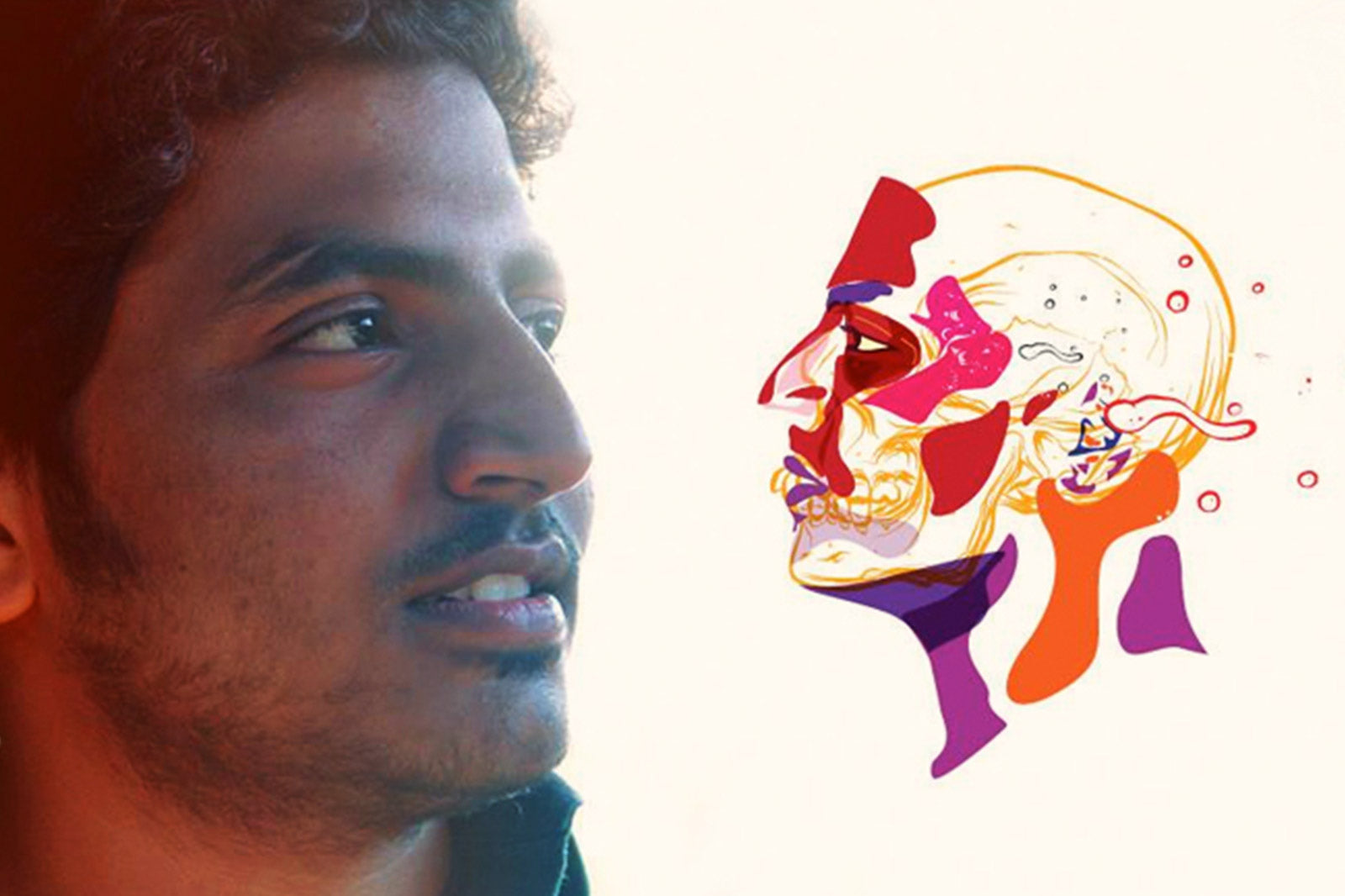Your Cart is Empty

His client roster includes the likes of RedBull, Pepsi and Tata Motors. Currently freelancing, Sajid loves creating personal projects that allow him to explore his abilities. We spoke to him about being his own teacher and finding his feet in design.
Sajid: I did my Bachelors in Mass Media (a Mumbai University course for media studies). I was always into art, so to speak. Like most artists, I started scribbling and doodling at a very early age. Actually, it was my love for music that led to my acute interest in art and design. I admired the work done on album covers. To me, it seemed like such a small space to convey such deep thoughts, and I love work that is symbolic and metaphorical, containing hidden cyphers. Like Michael Jackson's Dangerous cover (by Mark Ryden) for instance, it's got so many things going on at the same time, and little parts of the images are clues to something larger. I also like Storm Thogerson's cover for The Cranberries album Eye of the Storm or Pink Floyd's Delicate Sound of Thunder, meant to reference the light and sound of a Floyd show.

Album art that inspires Sajid: Mark Ryden's cover for MJ's Dangerous, Storm Thogerson's work for the Cranberries (left) and Pink Floyd (right)
Sajid: I had no art background at all. There wasn't a single artist in my family (not that I know anyone who holds a brush or anything to create something wonderful other than food). I think for me it was about meeting the right people at the right time of your career. Technical bits like software, fonts, etc. I learned from a friend and many of the things I learned on the job, working on projects in offices. Getting inspired by office seniors. Also by having small pet projects. I believe it’s a great way to express yourself and learn the tricks without having any deadlines lingering around you.

An illustration by Sajid
Sajid: Once you get a head start in the industry, then you just move ahead. Getting it was a little difficult though. In the beginning, I already had a design portfolio, having worked on my college projects and events. But the problem was convincing people about the authenticity of my work. Wherever I went for an interview, people did not believe it was my work. People were always suspicious about it and I had to give long tests along with interviews.
Karma by Sajid
Sajid: Being a self-taught designer I had to struggle with typography. I was also unaware of the major art movements, artists and their work, secret design inspiration sites, etc. But on the contrary, it gave me a chance to be experimental with my work.

Typography experiments spelling Love (above) in Slice of Life and Dope (below) in Hindi
Sajid: I'm really moved by the way Deelip Khomane works. Seniors like Kailash Nayak and Rajesh Kulkarni, who taught me a lot. Storm Thogerson, whom I've mentioned earlier (English designer who worked with the likes of Pink Floyd, Led Zeppelin, Black Sabbath, etc) for his music-related work which has inspired me, and modern greats like Salvador Dali and Frida Kahlo.
Sajid: So I was a part of this T-shirt making company called OZO, along with two other friends of mine. There are pros and cons of running something like that. It gives you ample opportunity to learn the tricks of the trade, learn business, meet loads of people for promotion, selling and distributing. It also gives you a good sense of the current market scenario, consumer behavior, printing techniques, material of the cloth, etc. On the other hand, if you have something like that and you run it on your own, there is a lot of risks involved in it. Like your stock clearance on time, deadstock being a loss to the business. Plus at that moment we all had our own office and freelance projects that require funding so had to juggle it all. In this respect, a place like KS is really great.
Sajid for the Kulture Shop theme Dreamscapes
Sajid: I feel if you don’t have a traditional training, your work turns out to be more playful and experimental. In my opinion, one can only learn techniques in school but art comes from within. A person who doesn’t have an art background can try out different routes to reach his destination.
Want/Need by Sajid, exclusively for Kulture Shop